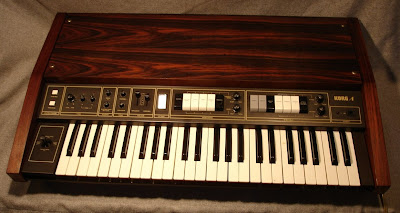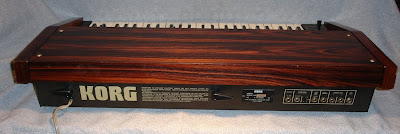
"New in Ableton Live 8
Version 8 enhances the Ableton vision of creative, real-time digital music with a wealth of new techniques, effects and most-wanted workflow improvements.
New groove engine
Groove patterns can add life and swing to straight sequences. Live 8's new groove engine lets you apply groove patterns in real time, extract grooves from audio or MIDI sources, quantize audio and MIDI in real time. It also comes with a new groove library.
New warping engine
Live 8 introduces a new, more direct way of working with warping and some important Warp Mode enhancements. You can now warp audio events by adjusting the events themselves on the timeline. Beats Mode has been updated, and there's a completely new Complex Warp Mode. Plus you can slice audio files to MIDI tracks based on transients.
Looper
A much-requested feature, the Ableton Looper effect gives you classic sound-on-sound looping without the limitations of a hardware device. Looper is set up for remote operation, so you can record, overdub, undo and more without touching the computer.
New effects
Live 8 includes five powerful new effects: Vocoder, Multiband Dynamics, Overdrive, Limiter and Frequency Shifter. These effects cover all the well-known aspects of these devices, but really shine due to some innovative features and enhancements from the Ableton labs.
Workflow enhancements
Version 8 makes Live easier with a number of most-wanted enhancements and some deceptively simple detail work including real-time crossfades in the Arrangement View, enhanced MIDI editing, group tracks, a screen magnifier and more.
New in Ableton Suite 8
Ableton Suite 8 is a package which gives you a rich world of sound, perfectly complementing the tools and features in Live 8. Suite 8 provides all the instruments a musician could hope for, including a wide range of synths, a powerful sampler, electric and acoustic drums, mallets, numerous sampled instruments: 10 instruments in all. Here's what's new in Suite 8.
World-class library
Ableton Suite 8's library completely surpasses everything that Ableton has ever offered before. With the creative professional in mind, Ableton has put together a well-balanced and comprehensive tool set and, above all, a wide-ranging set of beautiful sounds.
Collision
Collision is a unique instrument for authentic mallet sounds and creative percussion. Co-developed with AAS, it uses physical modeling technology to reproduce real-world instruments such as xylophones, marimbas and glockenspiels, but also provides enough depth to create truly dramatic new instruments and sounds.
Latin Percussion
Latin Percussion is a collection of acoustic percussion instruments such as congas, bongos, timbales, claves, shakers, tambourines and bells from the worlds of Brazilian, Afro-Cuban and African music. It also comes with clips and grooves, so you don't only get the drums, you also get the drummer.
More Operator, more power
Operator, Ableton's renowned do-it-all synthesizer, has been given a major overhaul. We opened up the hood, took a long hard look inside and did some serious hot-rod stuff. New filter types, more modulation routing options and additive wavetable synthesis with drawable partials make Operator more powerful and flexible than ever."
http://www.ableton.com/
 http://www.klangwabe.de
http://www.klangwabe.de
 via brian c
via brian c it is a midi controllable sampler sort of like a casio sk1 engine on steroids
it is a midi controllable sampler sort of like a casio sk1 engine on steroids some more images via
some more images via  A couple of new posts on the upcoming Moogseum are up on the Bob Moog Foundation blog.
A couple of new posts on the upcoming Moogseum are up on the Bob Moog Foundation blog. * Several interactive instrument-based exhibits that will allow people the ability to experience the science behind the sound of electfonic music. We envision bays of Theremins hooked up to Moogerfoogers and rows of synthesizers hooked up to oscilloscopes filling our interactive area. A modular synthesis wall is planned as well.
* Several interactive instrument-based exhibits that will allow people the ability to experience the science behind the sound of electfonic music. We envision bays of Theremins hooked up to Moogerfoogers and rows of synthesizers hooked up to oscilloscopes filling our interactive area. A modular synthesis wall is planned as well.

 via this auction
via this auction








 via this auction
via this auction

 The ultimate keytar, unfortunately it's not a synth, but... I'll make the exception for this most awesome axe.
The ultimate keytar, unfortunately it's not a synth, but... I'll make the exception for this most awesome axe.
 via Skrasoft Dev Blog via Mr. Array in the comments of this post. You can find some videos of the Pokey by littlescale here.
via Skrasoft Dev Blog via Mr. Array in the comments of this post. You can find some videos of the Pokey by littlescale here.  flickr by mesak
flickr by mesak flickr by mesak
flickr by mesak












